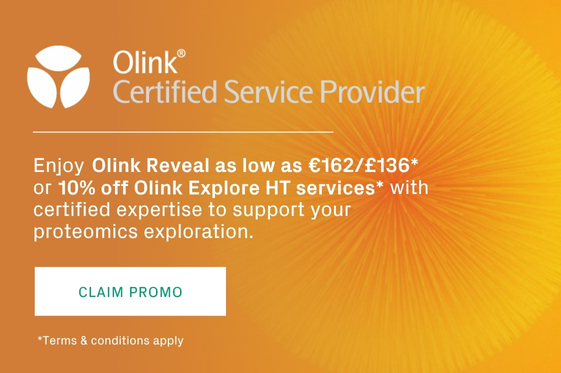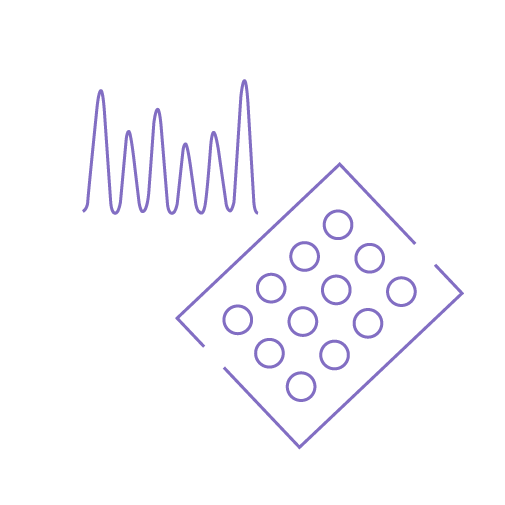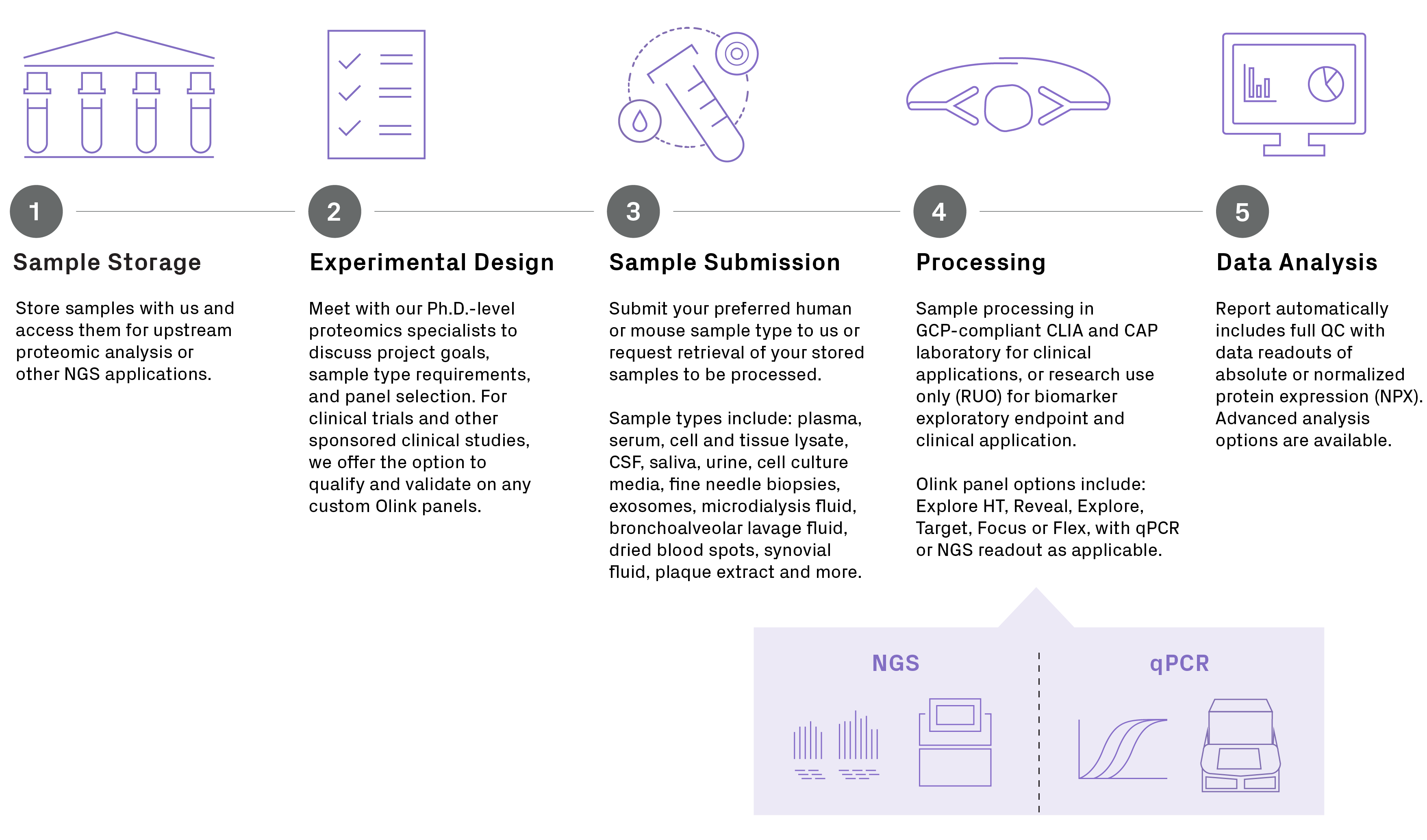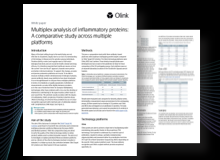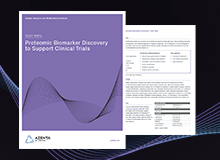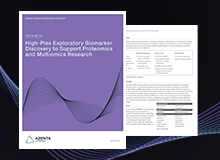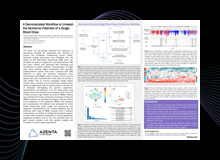Olink® Proteomics Services
GENEWIZ Proteomics Services uses Olink® Proximity Extension™ Assay (PEA™) technology to optimize the detection and quantification of circulating proteins. Unlike traditional methods, this approach enables high-throughput, simultaneous analysis of proteins with high specificity and sensitivity using minimal sample amounts. As a Certified Service Provider (CSP) of Olink proteomics technology, we offer uniquely scalable solutions from high-plex Olink Explore HT and Reveal, to mid-plex Target 48 and 96 assays, down to customized Flex and Focus assays. Processing is available for research use only (RUO) or can be performed in our GCP-compliant CAP-accredited, CLIA-certified laboratory for clinical applications.
Proteomics, the study of proteins, provides a comprehensive picture of disease phenotypes and mechanisms at the functional site. Through proteomics at a population scale, scientists can identify causal proteins, uncover novel pathways, and discover potential therapeutic targets. This holistic approach has the potential to revolutionize drug development.
What does Olink Proteomics do?
Olink proteomics enables high-throughput, simultaneous analysis of tens to thousands of targeted proteins with high specificity and sensitivity using minimal sample amounts.
Applications of Proteomics
Learn more about why researchers and clinicians include Olink Proteomics technology in their studies.
Proteomics Techniques
Olink platforms scale from high-plex (Explore HT, Reveal, and Explore 3072), to mid-plex (Target 48 and Target 96), down to customized low-plex assays (Focus and Flex).
| Platform | Description | Details | Download |
|---|---|---|---|
| Explore HT | Containing over 5,400 proteins with proven specificity, Olink Explore HT offers 100% coverage of top-level pathways and is the next generation solution for high-throughput proteomics. | The most comprehensive panel yet, Explore HT includes 2,536 new biomarkers. With Olink Explore HT, just 2 µL of sample are consumed to measure over 5,300 proteins. Data are available via NPX values, or Normalized Protein Expression, for relative protein quantification. | Click to download the assay list: Explore HT Assay Protein Panels > |
| Reveal | With broad coverage, Olink Reveal is the most cost-effective panel yet. This accessible solution enables deep profiling of the proteome with as little as 4 μL of sample. |
|
Click to download the assay list: Reveal Protein Panels > |
| Target 96 | With Olink Target 96, choose from 15 strategically designed panels built for specific areas of human disease and key biological processes. For researchers working with mouse models, Target 96 Mouse Exploratory is also available. |
Disease areas:
|
Click to download the assay list: Target 96 Protein Panels > |
| Target 48 | Olink Target 48 Cytokine and Immune Surveillance panels offer the highest relevance targets for investigating inflammatory processes, immune responses, and related diseases. These panels provide robust support for clinical trials and translational research. Target 48 Mouse Cytokine is also available. |
Use the Target 48 panels to elucidate:
|
Click to download the assay list:
Target 48 Cytokine Protein Panels > Target 48 Immune Surveillance Protein Panels > |
| Flex & Focus | With Olink’s made-to-order products, Flex and Focus, researchers can select and combine 5-30 biomarkers into a single panel customized to fit their specific research needs. | Choose and combine pre-validated assays from Olink’s extensive biomarker library. The assays have 99% combinability and maintains the quality, performance, specificity, and sensitivity associated with standard Olink panels. The data is reported in absolute (pg/mL) or relative (NPX) quantification. | Click to download the assay list: Flex/Focus Protein Panels > |
Custom bioinformatics analysis and reports are available. Please contact us about how we can customize your analysis to answer your biological question.
The GENEWIZ Difference
-

Olink Certified Service Provider
Global CSP for Olink Explore HT, Reveal, Target, Flex and Focus assays
-

Sample and Material Management
Offering storage and transport of your samples
-

Fast Turnaround
Flexible turnaround times to suit your needs, whether you need expedited results or a more relaxed timeline
-

CAP and CLIA Processing
Processing available in our GCP- compliant CLIA and CAP laboratory for clinical applications
Webinar │ Beyond the Genome: Revolutionizing Health with Population-Scale Proteomics and Biomarker Discovery
In this webinar, co-hosted with Olink, discover the role of proteomics in advancing
personalized medicine. Our guest speaker, Haythem Latif, Ph.D., provides insights on the
importance of biomarkers and how you can effectively integrate proteome data with
large-scale genomic datasets to broaden your understanding of human health. Plus,
learn about recent population-scale studies utilizing protein biomarker discovery to go
beyond the genome.
Blog │ The Power of Proteomics
The landscape of drug development is constantly evolving, fueled by groundbreaking scientific
advancements. While genetics has played a central role in understanding diseases, proteomics
provides a more comprehensive picture of disease phenotypes and mechanisms. In this blog,
discover how researchers and clinicians are using Olink proteomics to reshape the outcomes
of their clinical studies.
Blog | Comparing Mass Spectrometry, ELISA, and Olink for Proteomics
The field of proteomics has evolved significantly in the last decade, with several technologies
now available to assay protein biomarkers in clinical studies. In this article, we compare three
popular approaches for proteomics – mass spectrometry, ELISA, and the Olink®
Proximity Extension Assay (PEA) – and highlight their strengths and limitations.
White Paper │ Multiplex Analysis of Inflammatory Proteins: A Comparative Study Across Multiple Platforms
Multiplexing technologies are often challenged by cross-reactive binding or interference
contributing to the signal readout, which can lead to poor
specificity. Olink®‘s proprietary PEA technology circumvents these
challenges by use of a dual recognition approach with matched pairs of antibodies
labeled with complimentary DNA oligos. This white paper verifies the quality of Olink
technology relative to two common multiplex proteomics platforms widely used in
protein biomarker research.
Tech Note | Proteomic Biomarker Discovery to Support Clinical Trials
Traditionally preclinical exploratory research and clinical trial biomarker detection and
measurement have been restricted to a few indicators measured by mass spectrometry and ELISA.
Discover how GENEWIZ has implemented fully validated protein biomarker discovery services using
the Olink® Proximity Extension Assay (PEA) technology capable of detecting and
measuring hundreds to thousands of proteins simultaneously.
Tech Note | High-Plex Exploratory Biomarker Discovery to Support Proteomics and Multiomics Research
The development of novel strategies for mid-to high-plex protein detection and quantification
enables greater utilization of protein biomarkers across the drug discovery and development
process. Using Olink® Proximity Extension Assay (PEA) technology, GENEWIZ has deployed
fully validated protein biomarker discovery services for up to 1 million data points per
experiment with comparable sensitivity to traditional methods and utilization of lower
sample amounts.
Blog | How Olink technology is revolutionizing proteomics and multiomics
Current proteomics technologies often present limitations in terms of throughput, specificity,
and cost. However, new innovations, such as Olink Proteomics’ PEA technology, are overcoming
these challenges by enabling hundreds to thousands of proteins to be measured in a single
sample. In this blog, discover how GENEWIZ is leveraging PEA technology for protein biomarker
discovery, its applications, and how it can complement genomics data to accelerate drug
development.
Webinar | Precision Proteomics: How to Enable Biomarker Identification in Health and Disease
Hear directly from Olink Proteomics about precision protein analysis as a tool to improve
health outcomes for patients with cancer, inflammatory, or age-related diseases. Take this
chance to discover how you can bring your protein biomarker discovery to the next level with
Olink PEA technology.
Webinar | Do More with Less: Harnessing the Power of Multiomics from a Single Sample
The -omics era has greatly expanded the repertoire of approaches available for researchers and
clinicians to unravel the complexities underpinning human health. In this recording from the
GENEWIZ Breakfast Talk at ASHG 2022, Dr. Andrea O’Hara presents a workflow to
rapidly produce a diverse set of multiomics results, including genomics, epigenomics,
transcriptomics, and proteomics, from a single blood draw.
Poster | A Demonstrated Workflow to Unleash the Multiomic Potential of a Single Blood Draw
The multiomics era has greatly expanded the repertoire of approaches available for researchers
and clinicians to unravel the complexity underpinning human health. Explore how the single blood
draw multiomics workflow from GENEWIZ can drive more significant insights and
innovation in human health applications.
NGS PLATFORMS
For information on our NGS platforms as well as recommended configurations of your projects, please visit the NGS Platforms page. GENEWIZ from Azenta does not guarantee data output or quality for sequencing-only projects.
